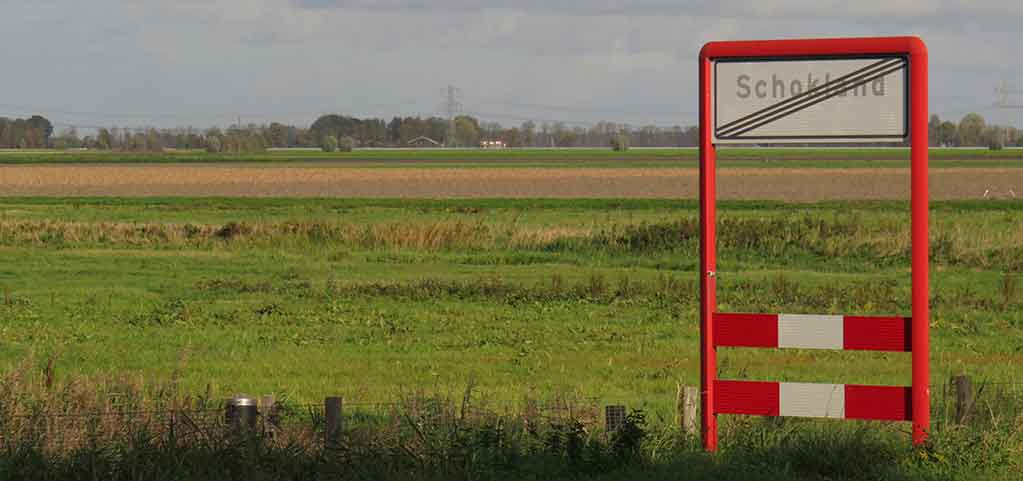Home
Short introduction
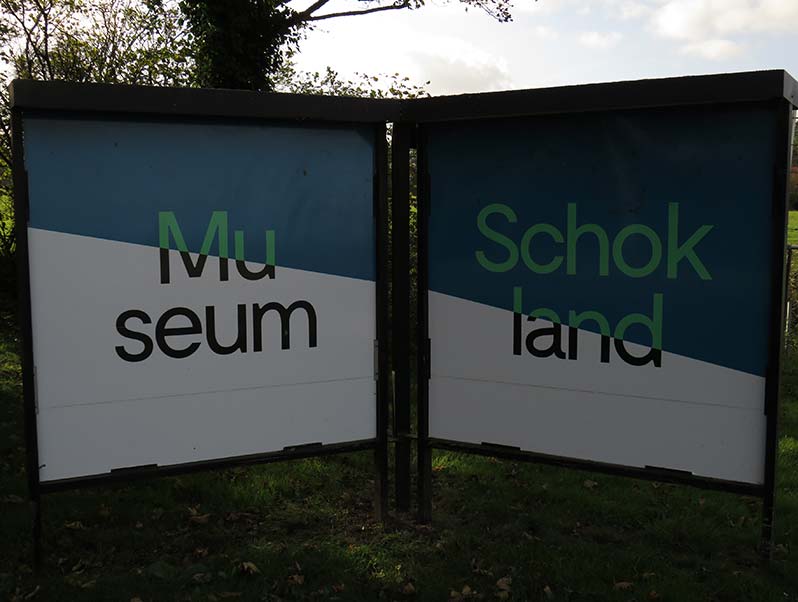 Schokland is a small place, now UNESCO Heritage, positioned in the Noordoostpolder, Netherlands. It is a very special place, starting on dry land, to evolving into a peninsula, to an island. Years ago, the islanders fought against the nature, now the nature is outlining the island. Around the borders of the island there is now a strip of trees. These were planted after the island was drained, because the land was starting to sag, and they wanted to protect the archaeological treasures that lay in the ground.
Schokland is a small place, now UNESCO Heritage, positioned in the Noordoostpolder, Netherlands. It is a very special place, starting on dry land, to evolving into a peninsula, to an island. Years ago, the islanders fought against the nature, now the nature is outlining the island. Around the borders of the island there is now a strip of trees. These were planted after the island was drained, because the land was starting to sag, and they wanted to protect the archaeological treasures that lay in the ground.
Schokland has a lot of beautiful nature, as well as beautiful creatures, finding their home on Schokland. There are even some endangered species to be found there. Along with the many animals, there are also about 5 people living on the island. This is because of the expansion of a nearby village. The island was in 1858 about 4 kilometres long, and on some places a bit more than 200 metres in width.
The history of Schokland
The history of Schokland starts 10.000 years ago, when hunters and gatherers populated the peninsula. But not very long, because these people were always moving to new places. But around 4.500 years ago the first people started to populate Schokland. With plans to live there a bit longer than the hunters and gatherers. The landscape was low, and very swamp-like. The people started living on the highest places, where they would be safe from the water. Almost everyone was farmer or cattle farmer. There was enough space to let cattle graze and grow food. Because of two rivers, a few kilometres apart, there was also enough drinking water. The water also provided the opportunity to transport things over water to other regions. But because of the rising water, the landscape became even more swamp-like. This had an impact on the river, that started to clog because of mud and plant remains, that ended up in the rivers. This lead a chain reaction, resulting in no one living on the peninsula. Only in the Middle Ages people started to populate it again.
In 1806 Schokland became a whole, previously the island was divided into two; Emmeloord and Ens. These places became the names for two places in the Noordoostpolder nowadays. The now island also got its name around then. Schokland is derived from the word Schokke, which means a piece of manure, or mud with reeds. Those were used as fuel back then.
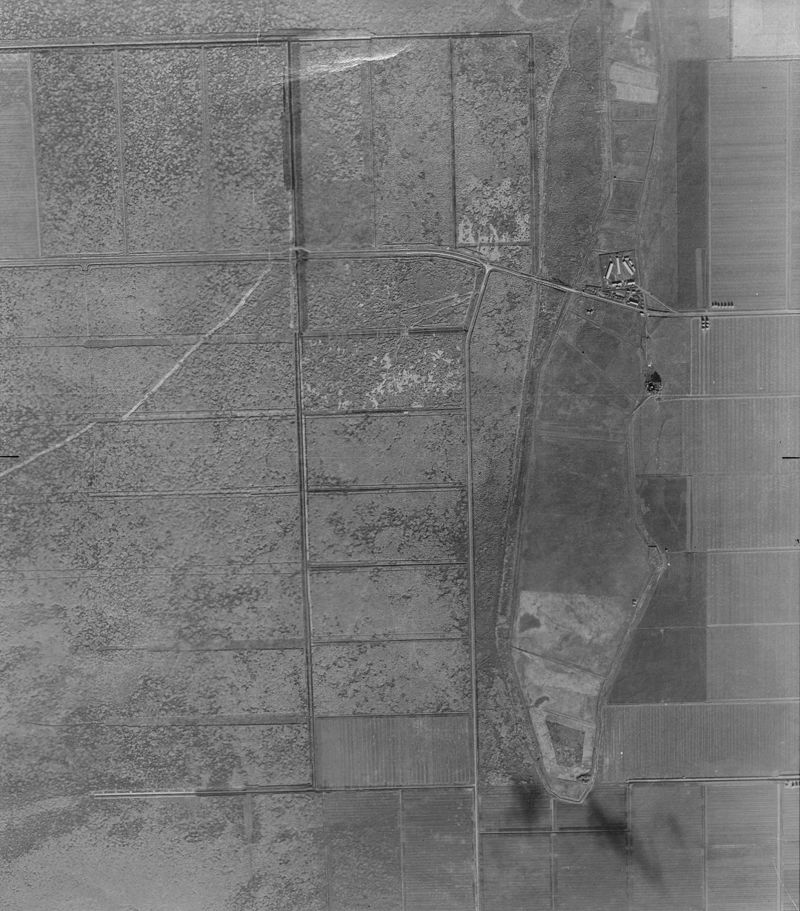
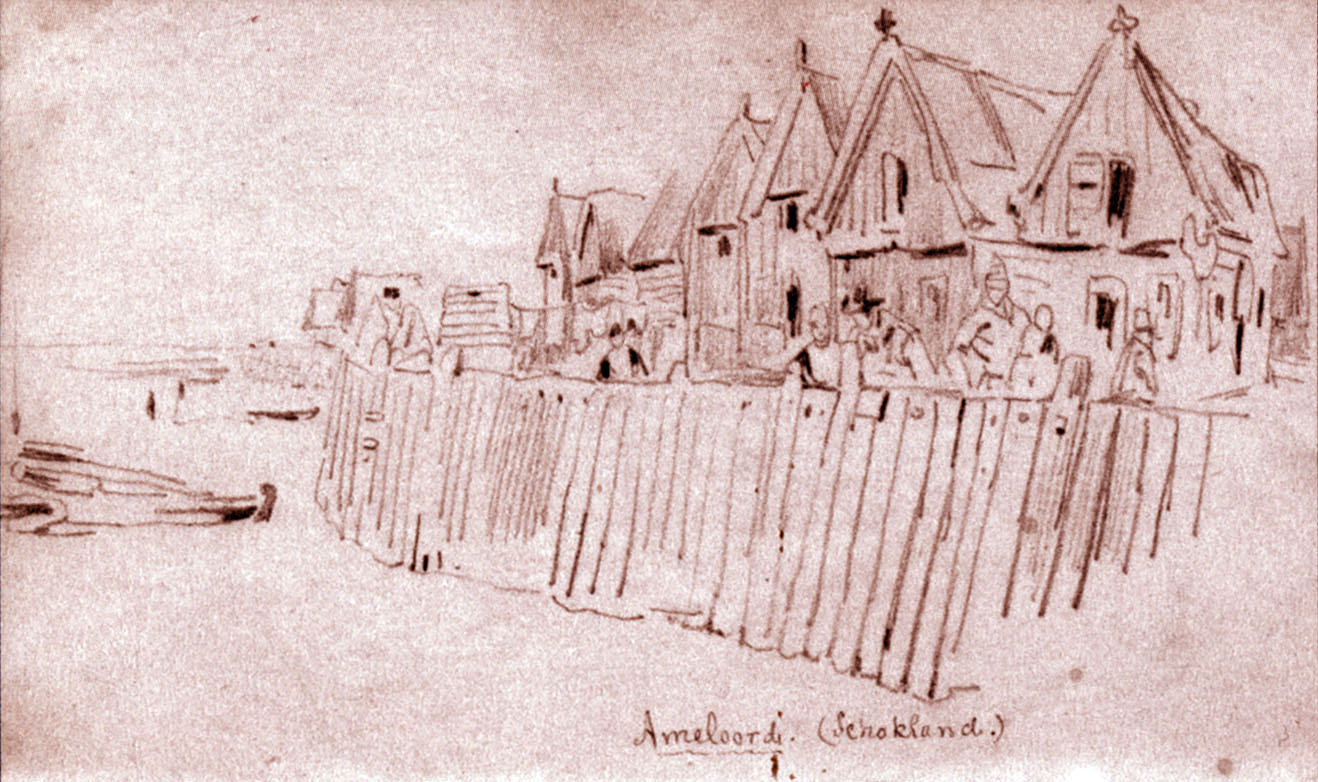
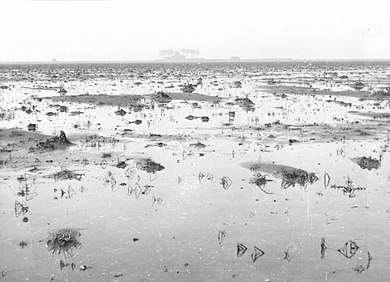
1st img ia a skyphoto of schokland, 2nd img is a drawing of Schoklands's dyke, and now museum, 3rd img is a picture of the land around Schokland, after draining it.
The storm urge of 1852
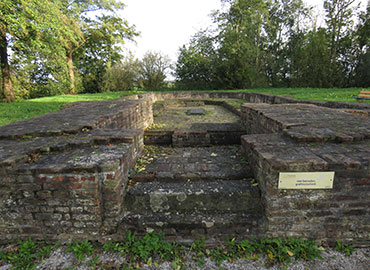 On 3 February 1825 during the night, there was a huge storm urge that took the lives of 13 people. A lot of buildings were permanently damaged, as well as many houses. The island was almost completely under water. The only save places then were the highest hills on the island. The island was not unfamiliar with water taking up ground. Many times, the island had lost pieces of dry ground to the water. But this time was different. The water had destroyed more than 2 kilometres of sea dikes. It did also a lot of damage to the pile barriers, and the two churches. The lighthouse on the island also took a lot of damage. The villagers had to flee to the attics of their homes, hoping to be save. As said earlier, 13 people lost their lives, 20 houses were gone. Tens of houses had severe damage. This made clear to the government, and everyone else in the Netherlands, that Schokland was not a save place to live. The government forced the people to leave the island. And in 1859 the last evacuation took place. Around 650 people still lived on the island at that point. The township Schokland disappeared, and Schokland became part of Kampen. Schokland was suddenly placed in another county because of this.
On 3 February 1825 during the night, there was a huge storm urge that took the lives of 13 people. A lot of buildings were permanently damaged, as well as many houses. The island was almost completely under water. The only save places then were the highest hills on the island. The island was not unfamiliar with water taking up ground. Many times, the island had lost pieces of dry ground to the water. But this time was different. The water had destroyed more than 2 kilometres of sea dikes. It did also a lot of damage to the pile barriers, and the two churches. The lighthouse on the island also took a lot of damage. The villagers had to flee to the attics of their homes, hoping to be save. As said earlier, 13 people lost their lives, 20 houses were gone. Tens of houses had severe damage. This made clear to the government, and everyone else in the Netherlands, that Schokland was not a save place to live. The government forced the people to leave the island. And in 1859 the last evacuation took place. Around 650 people still lived on the island at that point. The township Schokland disappeared, and Schokland became part of Kampen. Schokland was suddenly placed in another county because of this.
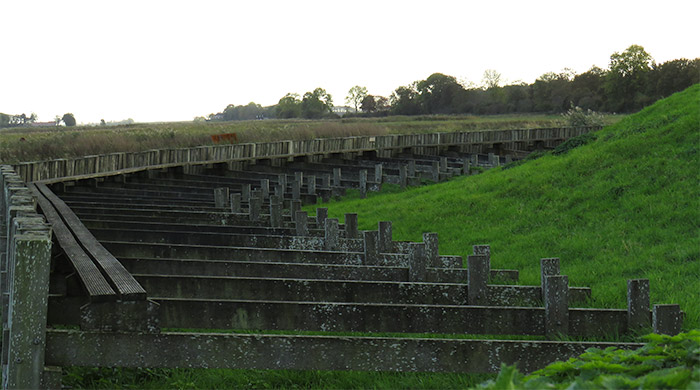 Ironically, after the evacuation, the island did not really shrink in size anymore. It was rarely threatened by storms anymore. After 1859 a few government officials stayed on the island. A light keeper on the southern point, a worker to maintain the coastal defence, and some harbour masters in the harbour of Emmeloord.
Ironically, after the evacuation, the island did not really shrink in size anymore. It was rarely threatened by storms anymore. After 1859 a few government officials stayed on the island. A light keeper on the southern point, a worker to maintain the coastal defence, and some harbour masters in the harbour of Emmeloord.
Religion and culture
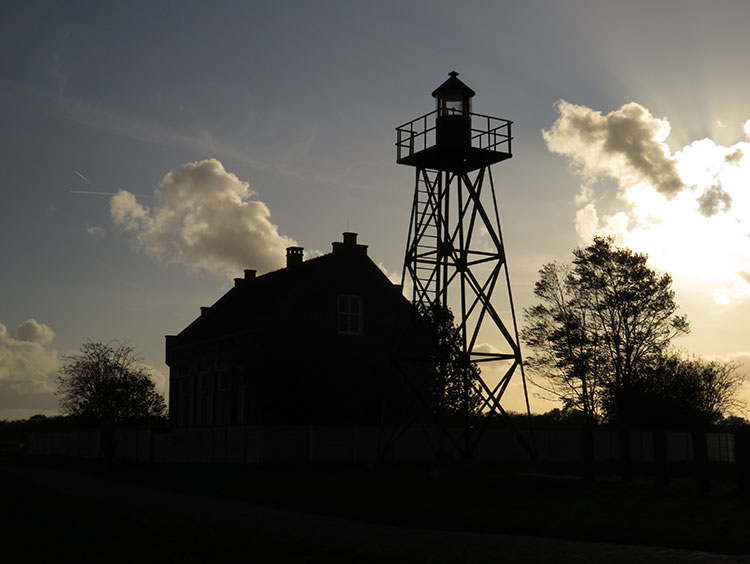 After the forced relocating, many people did not move to the catholic Volendam. Even though almost everyone on Schokland was catholic. Most of them moved to Vollenhove, and the village Brunnepe, close to Kampen, where the “Schokker neighbourhood” was build. Also, the catholic church of Emmeloord, a place in Schokland, was replicated stone for stone in Ommen. In 1940 this church was demolished again. On the island itself, there were religious differences. After the reformation the south part of the island became Protestant, while the northern Emmeloord, stayed Roman Catholic. This was because Amsterdam, that owned Emmeloord, did not put a lot of pressure on the people to become Protestant. The Protestants feared for influences of the Catholic Emmeloord and forbid their children to work or live with Catholic families. Mixed marriages were not done. Speaking about marriages, very few married someone outside of Schokland. This resulted in many people marrying a (far) family member.
After the forced relocating, many people did not move to the catholic Volendam. Even though almost everyone on Schokland was catholic. Most of them moved to Vollenhove, and the village Brunnepe, close to Kampen, where the “Schokker neighbourhood” was build. Also, the catholic church of Emmeloord, a place in Schokland, was replicated stone for stone in Ommen. In 1940 this church was demolished again. On the island itself, there were religious differences. After the reformation the south part of the island became Protestant, while the northern Emmeloord, stayed Roman Catholic. This was because Amsterdam, that owned Emmeloord, did not put a lot of pressure on the people to become Protestant. The Protestants feared for influences of the Catholic Emmeloord and forbid their children to work or live with Catholic families. Mixed marriages were not done. Speaking about marriages, very few married someone outside of Schokland. This resulted in many people marrying a (far) family member.
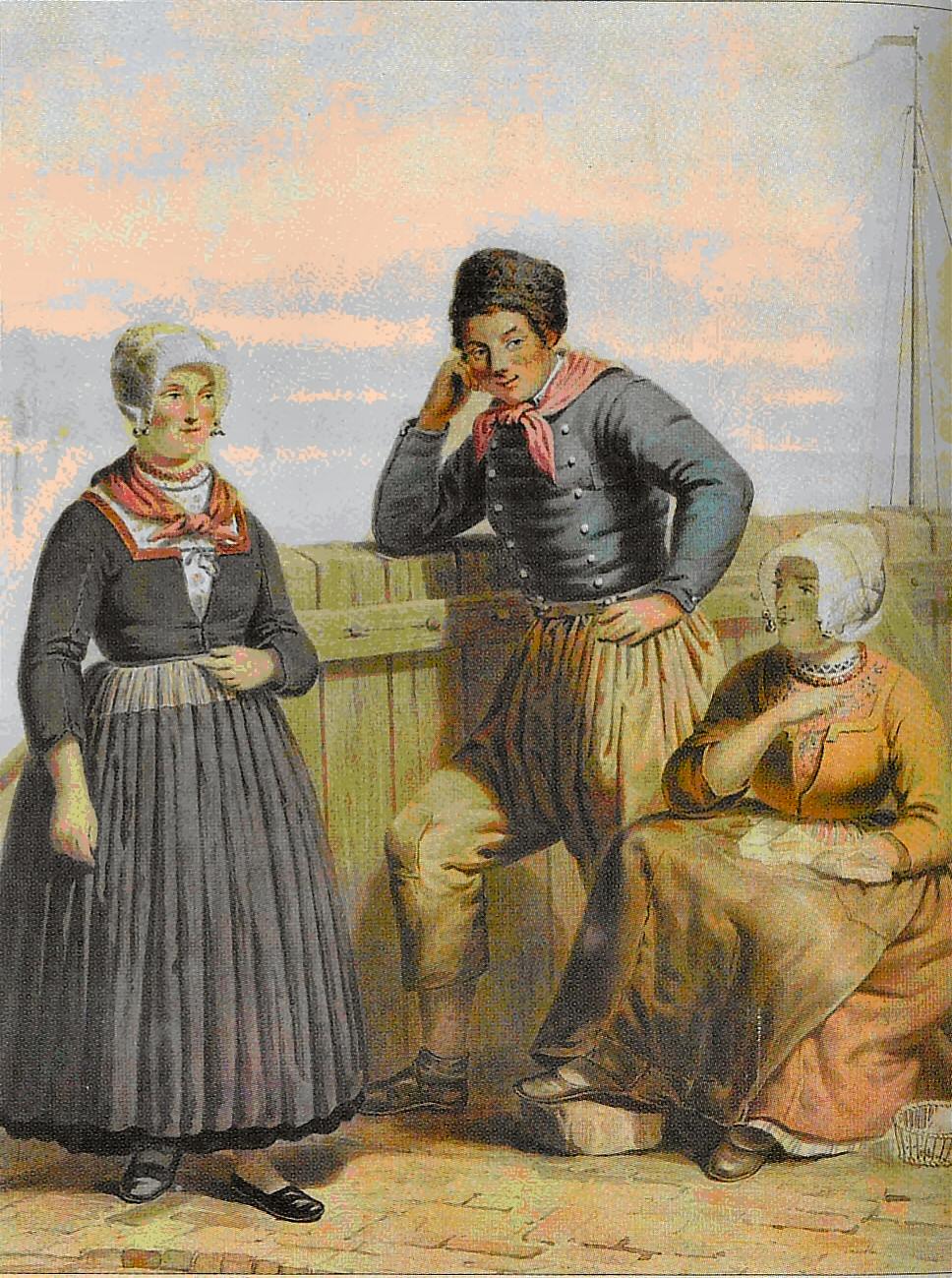 The name Schokland was supposedly a curse word. “Schokken” was the name for the fuel they used to keep their houses warm (see History). They were also very poor, and most people lived with 2 families in one house. A house had a wooden wall in the middle to divide the home into two. One family could have 2 parents and 10 children. On the average a family would have 35 m2 to live on. The walls were very thin and made out of wood, so it was hot in the summer, and cold in the winter. There was no prohibition on making houses out of wood, because the peat soil could not have a lot of weight, anyway. The people on Schokland also had various dialects. A different one in the north, and another in the south. They could communicate with each other though. Schokland also had specific traditional clothing. This is known as the Schokker traditional dress. The woman wore long ankle dresses and sometimes blue, but most of the time white hoods on their heads. The men wore t-shirts on wide, long trousers.
The name Schokland was supposedly a curse word. “Schokken” was the name for the fuel they used to keep their houses warm (see History). They were also very poor, and most people lived with 2 families in one house. A house had a wooden wall in the middle to divide the home into two. One family could have 2 parents and 10 children. On the average a family would have 35 m2 to live on. The walls were very thin and made out of wood, so it was hot in the summer, and cold in the winter. There was no prohibition on making houses out of wood, because the peat soil could not have a lot of weight, anyway. The people on Schokland also had various dialects. A different one in the north, and another in the south. They could communicate with each other though. Schokland also had specific traditional clothing. This is known as the Schokker traditional dress. The woman wore long ankle dresses and sometimes blue, but most of the time white hoods on their heads. The men wore t-shirts on wide, long trousers.
The story of Schokland
Mensje (this is a Dutch name, but translated means “little person”) was engaged with the sailor Jan Viool, who went on a trip to India. When he would come back, Mensje and Jan would get married. But lately Mensje had been having bad dream. She saw her sailor on the bottom of a ruin of a red tower, with around his neck a with blood drenched neckerchief. He shouted something to her, but she never heard what he said. Mensje knew something bad must have happened to him, and she became worried, also because he had not yet returned home after a year. And then, one night, the devil stood in front of her home. He promised her to give her back her fiancé, but in return, she had to give up her soul to him. She agreed with this devil’s plan and the devil took her to the infamous Sargasso Sea, where a lot of ships had met their tragic destiny. The ship of Jan Viool also crashed here as well. And so, Mensje was reunited her loved one. Jan then recovered his life, but he and Mensje could not be together for long. Because shortly after he got his life back, Mensje was changed into a happy and immortal mermaid. And there sat Jan, without fiancée and without a ship. He returned to Schokland and there he lived his life as a lighthouse keeper while he kept thinking of his lost Mensje. The mermaid did not stay long in the Sargasso Sea, and returned to the coast of Schokland, in order to be close to her fiancé anyway. Every time there are fisherman at sea, close to Schokland, and they hear her singing, they rush to the Schokker port. Because they knew for sure a storm was coming.
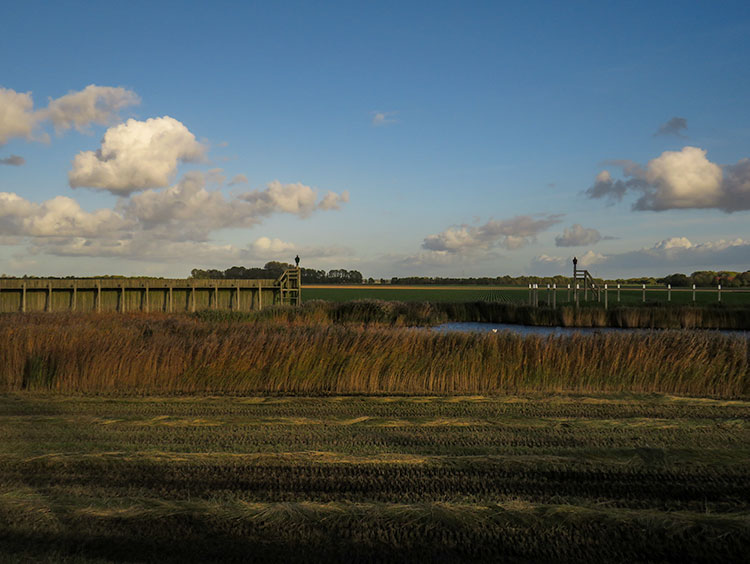
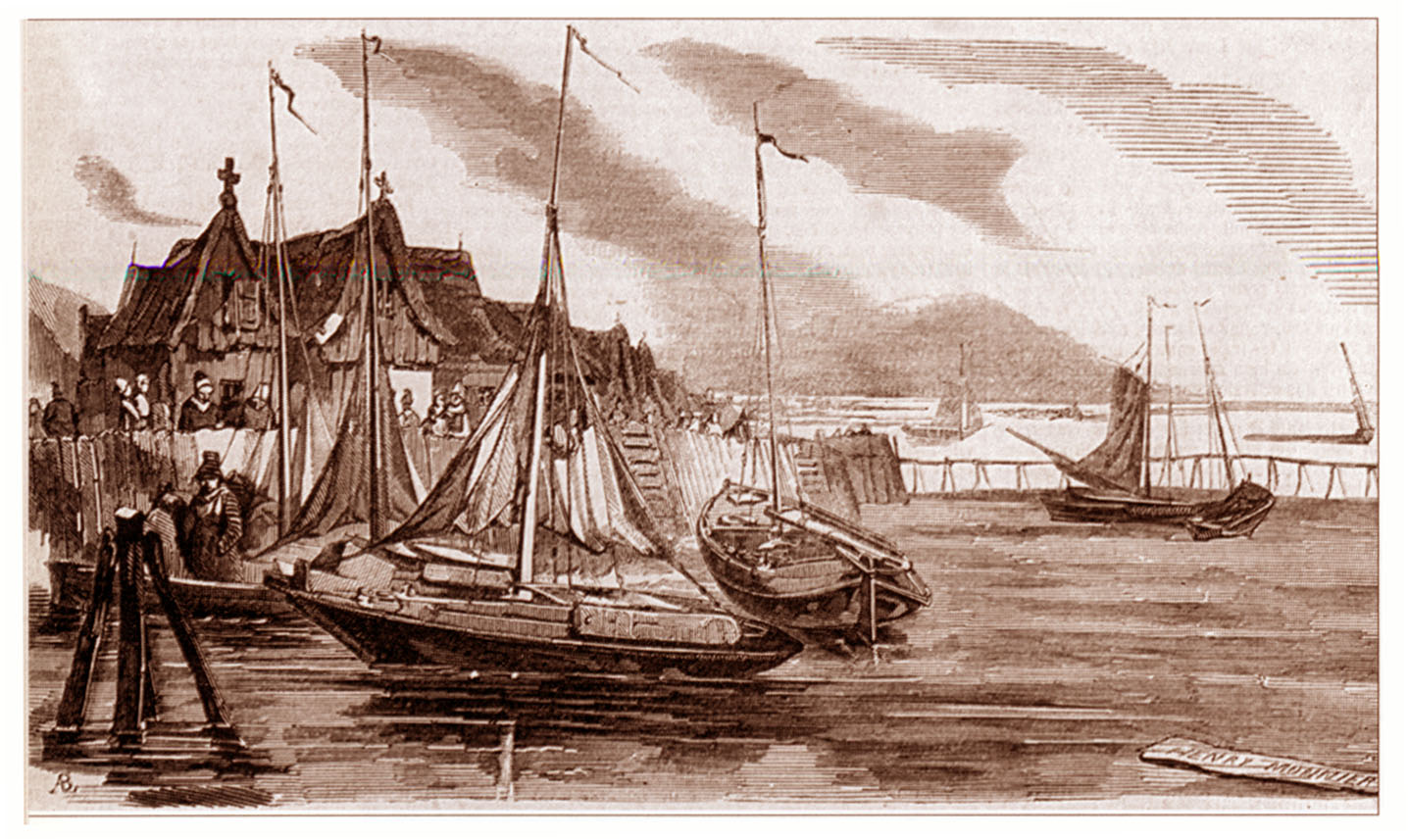
The future of Schokland
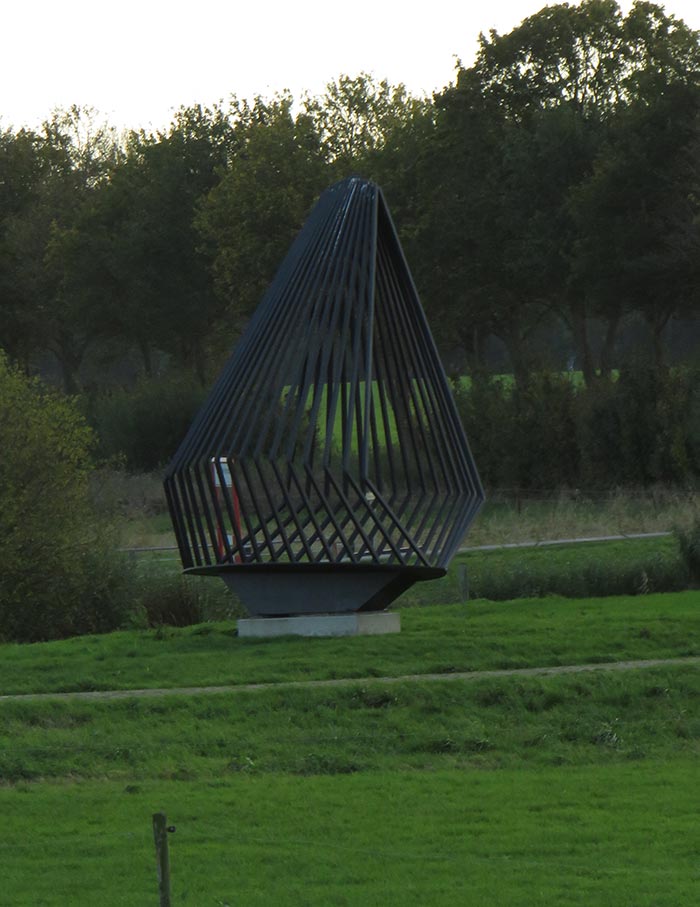 Schokland is the first piece of UNESCO heritage in the Netherlands, meaning it has cultural value. The island needs to be retained for future generations. It must be and stay a place where future visitors can experience the history and nature of Schokland.
But also where farmers can have their own company.
Schokland is the first piece of UNESCO heritage in the Netherlands, meaning it has cultural value. The island needs to be retained for future generations. It must be and stay a place where future visitors can experience the history and nature of Schokland.
But also where farmers can have their own company.
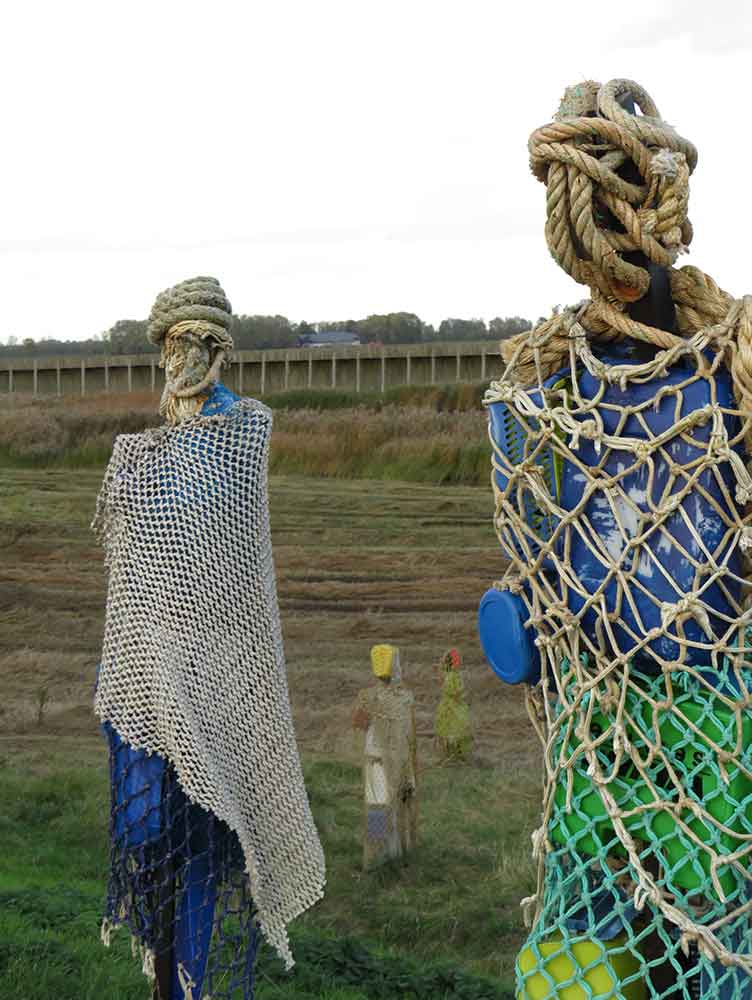 At Schokland, culture, nature, working and free time come together. The agriculture does their best at maintaining the area. The ground has already decreased by 1.5 meter, and they want to prevent that from happening again. The nature organization ‘Flevo-landschap’ and the township Noordoostpolder want to keep Schokland as a place where visitors want to go to. They want to put more people in contact with this historical piece of the Netherlands.
At Schokland, culture, nature, working and free time come together. The agriculture does their best at maintaining the area. The ground has already decreased by 1.5 meter, and they want to prevent that from happening again. The nature organization ‘Flevo-landschap’ and the township Noordoostpolder want to keep Schokland as a place where visitors want to go to. They want to put more people in contact with this historical piece of the Netherlands.
